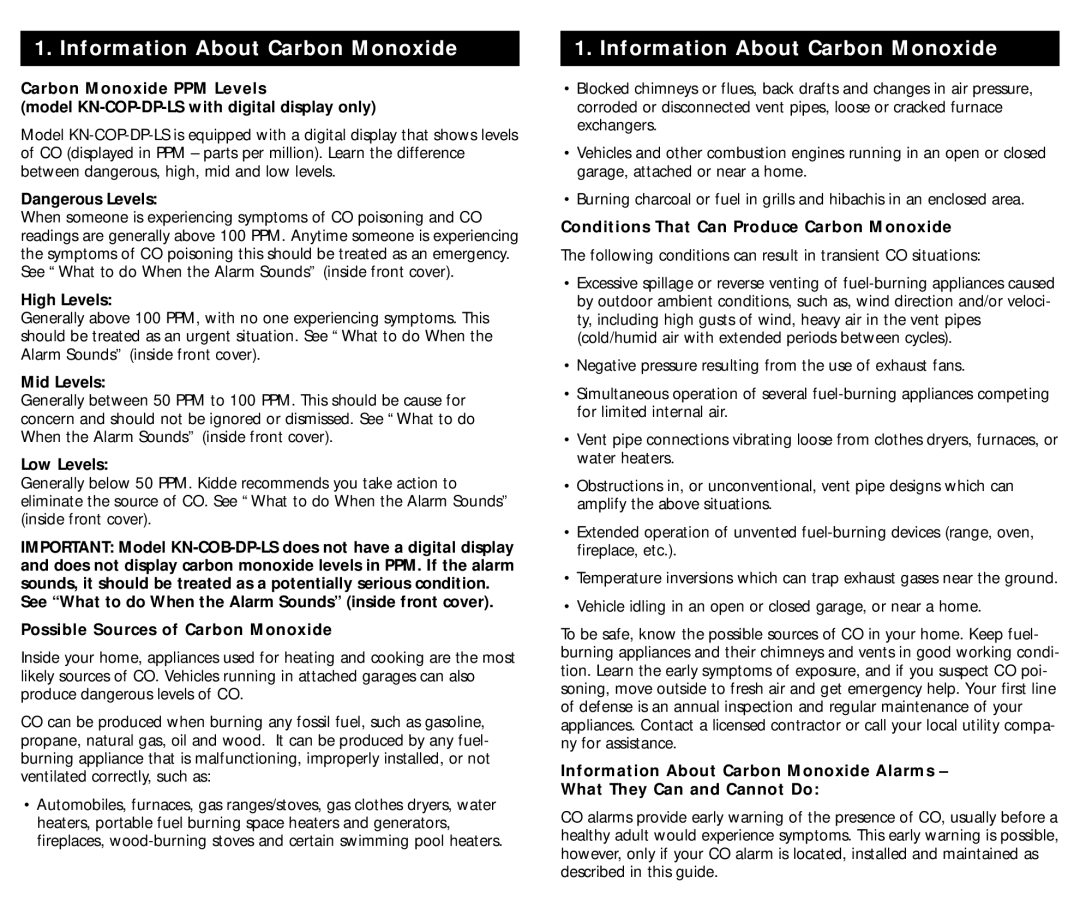KN-COB-DP-LS, KN-COP-DP-LS specifications
The Kidde KN-COP-DP-LS and KN-COB-DP-LS are advanced carbon monoxide (CO) detectors designed to enhance safety within homes and living spaces. These models feature a host of technologies and characteristics that ensure efficient monitoring and detection of carbon monoxide, a colorless, odorless gas that can pose serious health risks.One of the standout features of both models is their digital display, which provides real-time readings of CO levels in parts per million (PPM). This feature allows users to quickly evaluate the air quality in their environment. The easy-to-read display is complemented by a battery backup option, ensuring that the detector remains operational even during power outages.
Both detectors utilize a sophisticated electrochemical sensor that is designed to respond quickly to the presence of carbon monoxide. This technology is known for its accuracy and reliability, making it a valuable addition to any home safety system. The detectors are capable of detecting low levels of CO and are programmed to trigger alarms at different thresholds, thus providing early warning to occupants.
In terms of design, the KN-COP-DP-LS and KN-COB-DP-LS are compact and unobtrusive, making them easy to install in various locations around the home, such as hallways, bedrooms, and near fuel-burning appliances. Their sleek profile ensures that they can blend in with existing home decor while still remaining functional.
Another significant characteristic of these models is their built-in test/reset button, which allows users to easily check the functionality of the unit at any time. This feature promotes regular maintenance and ensures that the detector is working correctly. Furthermore, both models offer a loud alarm that sounds at 85 decibels, alerting occupants of dangerous CO levels promptly.
In addition to detecting carbon monoxide, the KN-COB-DP-LS model offers dual functionality by also detecting explosive gases, such as natural gas or propane. This added feature makes it a versatile choice for homeowners, providing an extra layer of protection against multiple hazards.
Both the Kidde KN-COP-DP-LS and KN-COB-DP-LS detectors exemplify innovation in safety technology. With their combination of advanced detection methods, user-friendly features, and reliability, they represent a vital investment for safeguarding health and wellbeing in residential settings.
